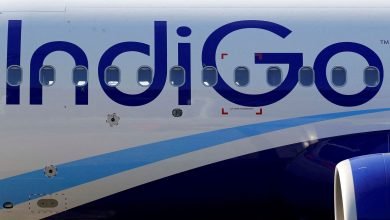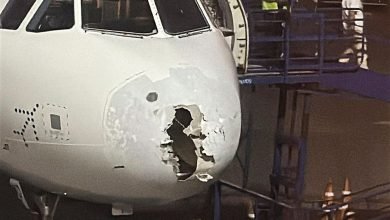Hoax bomb threats: Government exploring stricter norms including putting culprits on no-fly list | Business News

Given the spate of hoax bomb threats to Indian airlines’ flights this week, the Ministry of Civil Aviation (MoCA) is exploring ways to make regulations more stringent to enable harsher punishments for those behind such threats. Apart from tweaking rules under its control, including those of the Bureau of Civil Aviation Security (BCAS), the ministry is also in constant discussions with other key departments, including the home and law ministries, a senior MoCA official said Thursday.
One of the first measures that is understood to be in the works is inclusion of those behind hoax bomb threats in the no-fly list, which essentially would ban them from flying on Indian carriers’ flights. Currently, the no-fly list is maintained only for unruly passengers, including anyone making a bomb threat while on board. However, it does not cover those sending bomb threats from outside through calls, social media, and emails, among others.
Currently, such hoax bomb threats are dealt with in accordance with the country’s criminal laws, as there are no legal provisions dealing specifically with bomb threats to aircraft, said the official, who spoke on the condition of anonymity. While the standard operating procedures and security protocols are well-defined once a threat has been received, there is not much in regulations to prevent hoax bomb threats to aircraft.
“We want rules that can act as a deterrent…we want to set an example so that no one thinks of committing such mischievous acts,” said the MoCA official. The official added that with access to social media and virtual private network (VPN) services, it has become quite easy for miscreants to send out anonymous bomb threats, while making it difficult for the security agencies to track them.
“We are looking at what we can do at our end in terms of civil aviation regulations…our legal team is working on it and we are in touch with the law ministry as well. We are also talking to the MHA (Ministry of Home Affairs) as internal security is under their purview. They are also looking at the cybersecurity part,” the MoCA official said.
The government is also studying anti-hoax provisions that are followed in various other countries, which can be incorporated in the regulations in India. Guidelines from the International Civil Aviation Organization (ICAO) are also being studied. If required, MoCA is willing to push for amendments in legislation as well to enable stricter provisions, the official added.
At least 20 flights of major Indian airlines have received hoax bomb threats this week. Although most bomb threats turn out to be fake, airlines as well as aviation authorities globally take them with utmost seriousness. The security checks, which often take a few hours, result in disruptions like delays and even rescheduling of the remainder of the flight in some cases, which hit the airlines financially.
Story continues below this ad
When an aircraft receives a bomb threat deemed as a specific threat, a detailed security protocol is followed which could include diverting the aircraft to a suitable nearby airport and taking it to an isolated bay, where passengers are quickly made to deplane. The aircraft as well as passengers’ bags are subject to a thorough security inspection before being allowed to take off again. After the screening and security checks, if the threat is found to be a hoax, the aircraft is released for operations.
© The Indian Express Pvt Ltd




